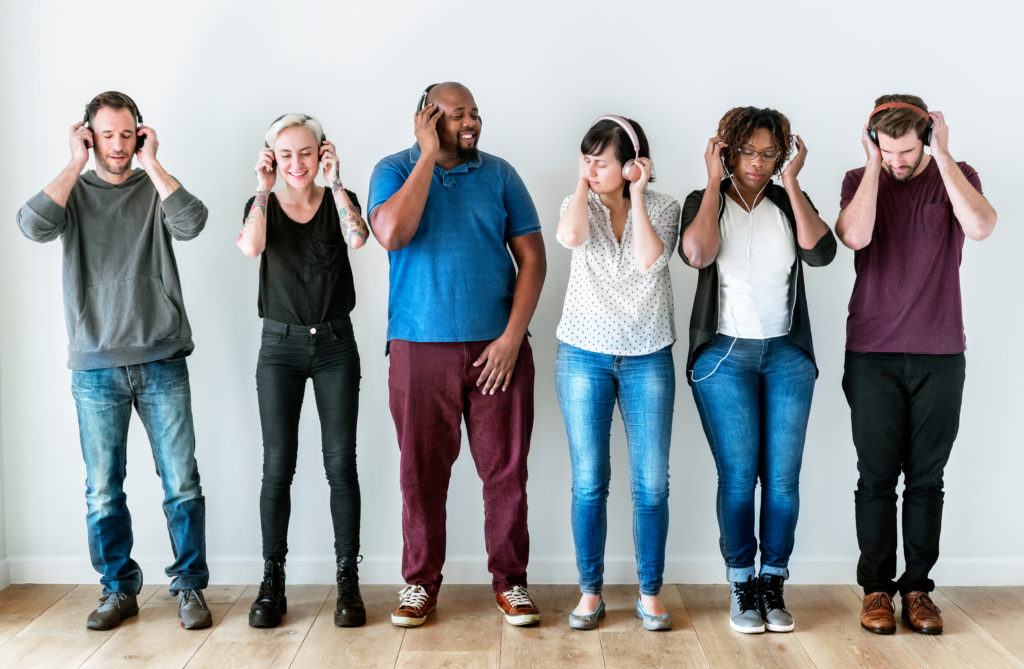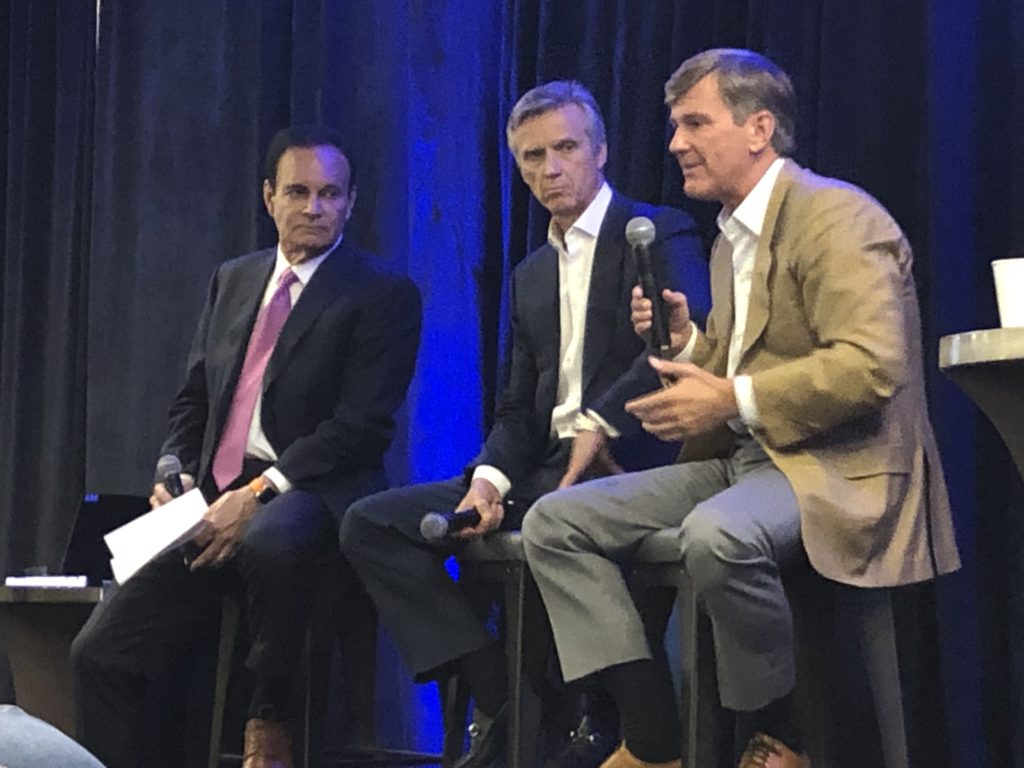
The title of today’s blog post is essentially the rationale I give to explain why we conduct our Techsurveys. After thinking about some of the panel discussions I saw at the Conclave’s opening day sessions, I’m feeling even more comfortable about our mission to provide radio with data about its audience, their habits, and how they’re changing.
In session after session in Minneapolis, panelists and keynoters discussed digital media – where the audience is going and how they’re consuming media. This included detailed discussions of on-demand vs. “linear radio” – a hot topic in the much-promoted session featuring Lew and John Dickey, interviewed by the acerbic Jerry Del Colliano.
Steve Goldstein hosted a great session on podcasting, Jon Zellner took the reins on a panel featuring some of radio’s top PDs, while Tony Coles hosted the Conclave’s signature “Ask Me (Almost) Anything” kickoff session, featuring Val Geller, Buzz Knight, Tim Clarke, and Shelly Easton.

And in every one of these sessions, the topics often had more to do with social media, smart speakers, connected cars, podcasts, streaming audio and video than the x’s and o’s of what it takes to program and produce a great-sounding radio station. Perhaps that’s a tacit acknowledgment that programming an above-average sounding radio station is table stakes in 2019.
Assessing the other channels and platforms in which to create content was a considerably hotter topic of conversation. And that had to hammer home an important message to young broadcasters in the room:
The radio industry in which you aspire to make your living had better change if it is to remain vibrant, competitive, and relevant.
The fact that message was delivered again and again by grizzled radio broadcast veterans made it even more significant and impactful.
When I got back to my room at the end of today’s content-packed Conclave sessions, I opened a story I’ve been sitting on for a couple weeks that was published by Nieman Lab. Written by Mark Jacob, the story – “Sobering reality for news outlets: Your readers are somewhere else 99% of the time” – takes a hard look at the notion the competitive media has expanded exponentially in recent years.
Jacob’s analysis concludes that newspapers, for example, are competing for readership with websites, NPR, and social media as much as, if not more than, other newspapers.
The same could very likely be said for radio.
And when I read Jacob’s opening question to local news producers, it had a strong ring of familiarity:
“What are your readers doing when they’re not listening to you?”
The article focuses on a new study by Northwestern University’s Spiegel Research Center that used Comscore data to look at three local news websites.
A key takeaway: “There’s a lot of competition out there.”
A second takeaway is that studying other outlets an audience uses can provide a “powerful early-alert insight” into their changing tastes. The study points to Twitch as a site that showed significant growth among one newspaper’s readers.
The Spiegel team concludes that media brands should make “an intentional effort to gather this broader understanding of competitive forces.”
And they note that when you understand where your audience is going when they’re not using your brand, there are two options to pursue:
- Partner with media outlets your audience may already be gravitating to (or that are similar to the ones they’re using now)
- Create products that reflect audience movement
That fits our Techsurvey mission to a T. By providing a media road map of the outlets, platforms, and media listeners use, it is possible to build a smart strategy – brand by brand.
Analyses like this Spiegel study support the idea that simplistic reports like the “When I’m the P1 station, who’s the P2? station” miss the more likely reality that consumers may be switching off the radio platform entirely, choosing instead to seek out news, information, music, and entertainment from other media outlets.
Several years ago in Techsurvey, we added the “Brand Pyramid” – a visual report on the brands respondents use weekly or more often (except for SiriusXM subscribership). This strip on the far right is last year’s totals.
So, where’s the growth year-to-year? With video streaming outlets, Netflix, Amazon Prime Video, and Hulu. And YouTube is no slouch either.

That doesn’t mean you’re competing with Netflix per se. But it might indicate an audience especially enjoys streaming video. And that might stimulate action steps to start producing videos or to partner with a media producer with this expertise.
But understanding the brands an audience uses runs deeper than that. The data in this pyramid for sites like Facebook, Twitter, Instagram, and Snapchat also show you where your audience “socializes.” Or that heavy use of the Shazam app might signal an interest in new music discovery. Or that strong SiriusXM subscribership could trigger a series of promos underscoring the fact your station is free – “no subscription fees.”
Of course, usage varies greatly by demographics and formats. Brand consumption differs greatly, whether we’re looking at Millennials, Sports Radio fans, women – or of course, a station’s hometown audience.
The Spiegel researchers call this “competitive intelligence.” We continue to call it our version of AI – or “audience intelligence.” And it’s the data brands need to not only make smart content creation choices, but also distribution decisions – that is, where will that content end up? As the Spiegel study indicates, readers – or in this case, listeners – spend a lot of their media time with brands that sadly aren’t yours.
It’s the logical outgrowth of having myriad media options – a condition that no one can control.
But radio can acquire the competitive consumption information – or audience intelligence – necessary to craft smart strategies, while deploying human and financial resources intelligently.
Radio has to get smarter and more strategic as the competitive landscape broadens. Yesterday, Lew Dickey called for “an investment cycle period” for radio, to enable the industry to compete in spaces like mobile and digital. That’s a wonderful idea that may never happen. Broadcasters will never have the resources that juggernauts like Amazon, Facebook, or Google enjoy.
But they do have the ability to generate their own data, along with wit, creativity, and their innate ingenuity. And let’s not forget reach.
This is the not the first time radio has faced a true existential crisis.
But the industry will have to become smarter, savvier, and more strategic to solve it.
Congrats to Lori Lewis & the Conclave Board for pulling off another strong conference. We appreciate the honor of presenting at Conclave.
And congrats to Paul Jacobs on winning the coveted 2019 Rockwell Award, a career milestone.
- Can Radio Afford To Miss The Short Videos Boat? - April 22, 2025
- Media And Technology In 2025: Believe It Or Not! - April 18, 2025
- In Radio, You Just Never Know - April 17, 2025




Leave a Reply